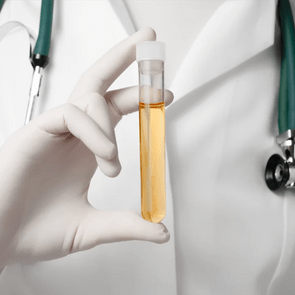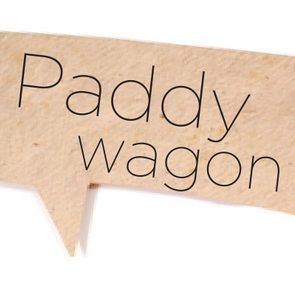Why is my pee red?
There’s no doubt about it: Seeing red in your urine can be scary. This likely needs to be checked out by a doctor, but red or pinkish urine in and of itself is not a reason to panic. There are many explanations for why you may see red in your urine, and many are totally benign and or easily treatable. Plus, not all red pee is the result of blood in urine.
“Urine can have a range of colours, from clear yellow to dark red,” says Tolulope Bakare, MD, an assistant professor in the department of urology at UT Southwestern Medical Center in Dallas.
The colour of your urine can change for many reasons, including the food you eat, the medicines you take, how much water you consume, how hard you hit the gym, and/or any underlying medical conditions.
Here’s what you need to know about blood in urine, red pee, and more.
Why is urine yellow, anyway?
Urine is mostly water, but it also contains salts such as sodium, potassium, and chloride. Other components include uric acid, a natural waste product from food digestion, and urea, a waste product made of ammonia and carbon dioxide. The yellow colour comes from urobilin, another waste product stemming from the breakdown of red blood cells.
Water and these substances form urine. Urine flows from the kidneys to the bladder and is carried out of your bladder through your urethra. Adults eliminate about a quart and a half of urine each day, according to the Kidney & Urology Foundation of America.

Causes of red urine
Visible blood in your urine is known as gross hematuria. Still, red urine doesn’t always mean blood, says Elizabeth Kavaler, MD, a urologist at Lenox Hill Hospital in New York City.
Here’s what could cause red pee or blood in urine.
Food or medications
Your urine may be red because of something you ate, Dr. Kavaler says. Common culprits include beets, blackberries, and rhubarb. While cranberry juice is often a recommendation to help prevent or treat urinary tract infections, it can’t turn your urine red. Think back on what you ate over the past day or two, and if any of these foods are on the list, you’ve likely got your answer.
Certain medications may also cause urine to appear red. This list includes phenazopyridine (Pyridium), a drug that numbs pain in your urinary tract and/or laxatives containing senna, Dr. Kavaler notes. (Discover the 17 everyday medication mistakes that could make you sick.)
Urinary tract infection
Urinary tract infections (UTIs) are one of the more common reasons for seeing blood in your urine, Dr. Kavaler says. It usually travels with other symptoms, including:
- Burning while urinating
- Frequent urination
- An overwhelming desire to urinate
- Pressure in your lower abdomen
Green urine could also be a sign of a bacterial infection in your urinary tract, she says. Your doctor can order a urinalysis to see if bacteria are present in your pee. UTIs are typically treated with a course of antibiotics, she says.
Kidney disease
Some kidney problems or diseases can cause urine to appear reddish or brown, Dr. Bakare says. For example, bleeding can occur when you are passing a kidney stone. Kidney stones are small pebbles of salts and minerals found in your urine, and passing them naturally can be extremely painful. There are several types of stones. If possible, save the stone so your doctor can have it analyzed as this information can better guide prevention advice.
Glomerulonephritis is the umbrella term for a group of diseases that cause inflammation in the part of the kidney that filters blood and can sometimes cause blood in urine, Dr. Bakare says. Treatment may include medication or temporary dialysis to help your kidneys function.
Polycystic kidney disease is a genetic disorder marked by cysts in the kidneys that can cause blood in your urine. There is no cure for this condition, and treatment is focused on slowing the growth of these cysts and curbing related symptoms, according to the National Kidney Foundation. (Learn the 10 silent signs of kidney cancer you might be ignoring.)
Prostate problems
In men, the prostate gland can also be a source of bleeding in urine. The prostate is a walnut-shaped gland located just below the bladder in men. An enlarged prostate from benign prostatic hyperplasia (BPH) or prostate cancer may press on the urethra, causing bladder irritation and bleeding, Dr. Kavaler says. There is also prostatitis, or inflammation of the prostate, which could be due to an infection or another cause and result in blood in the urine.
Sometimes, you can see clots or clumps of red blood in your urine, explains Marisa Clifton, MD, assistant professor of urology and the director of women’s health at the Brady Urological Institute at Johns Hopkins Medicine in Baltimore, Maryland.
“When there is enough bleeding in the urinary tract, the blood can collect and clot,” she says. This can occur from urethra bleeding, prostate bleeding, or any other source of bleeding in your urinary tract. If your doctor suspects a prostate issue, they can order more testing.
Treatment for prostate cancer is based on the stage and size of your tumor. BPH, which occurs in nearly all men as they age, is treated with medication to relax your bladder or shrink the prostate and/or surgery.
Bladder cancer
While blood in urine can be a sign of bladder cancer, this type of cancer is relatively rare. It typically affects older people (the average age at diagnosis is 73), and is more common in men than women.
About 65,000 men and 20,000 women are diagnosed with bladder cancer each year, according to the American Cancer Society. The number one risk factor for bladder cancer is smoking, Dr. Bakare says. “If there is blood in the urine, we want to rule out bladder cancer, especially if someone has a history of smoking.”
Other signs may include painful and/or frequent urination. A thorough physical exam, urine analysis, and or imaging tests can help your doctor diagnose bladder cancer. Bladder cancer treatment depends on the size and stage of the tumor, but usually involves surgery and other treatments such as chemotherapy or radiation, according to the American Cancer Society. (These are the 10 clear signs you could have overactive bladder.)
Is blood in urine coming from someplace else?
The blood could also be coming from someplace other than your urinary tract, she says. “For women, when you see red in urine, it could also be from your period or a part of your reproductive system,” Dr. Bakare explains.
How can you tell? Check to see if you are spotting at other times, she says. If you are, this may be why you see red in your urine. “Get checked out by a gynecologist,” says Dr. Bakare.
Blood that you can’t see
Sometimes there is blood in your urine that you can’t see. This is called microscopic hematuria because it is only visible under a microscope. “Guidelines state that any more than three red blood cells in a urine sample under microscope should prompt a referral to a urologist,” Dr. Bakare says. Routine urine tests can be part of annual wellness exams.
The last word
There are many potential reasons that you see blood in your urine or notice that it is red in colour. “In general, symptoms are more important than colour,” Kavaler says. “Call your doctor if you see a change in your urine that doesn’t seem linked to a new medicine you’re taking or a recent meal, especially if it lasts, worsens, or travels with symptoms.”
Along with a thorough physical exam, your doctor can order a urinalysis and possibly some blood work to help get to the bottom of it.
Next, check out why asparagus makes your pee smell.

Happy Face
Jana Gauthier of Tantallon, Nova Scotia, writes: “I snapped this pic several years ago, while on an afternoon stroll through a sunflower maze at Dakeyne Farm in Mount Denson, N.S.”

Ready to Bloom
“I captured this shot of a sunflower just beginning to open,” shares Robbie Gorr of Petawawa, Ontario. “I always plant a row or two of sunflowers at the back of my vegetable patch. I enjoy seeing the large, bright flowers in that space and they also serve to attract birds and insects of all kinds.”

Full of Joy
Heather McIlravey of Severn Bridge, Ontario, sent along this beauty that she snapped in her garden, writing: “I always start sunflowers from seed for all the bees, birds and squirrels to enjoy.”

Golden Meadow
“While travelling the back roads in the rural farming community in which I reside, I came across this wonderful field of sunflowers,” says Elaine Howard of Wallacetown, Ontario. “It was a cloudy day, but the field was bright and full of sunshine!”
If you enjoyed this collection of sunflower photography, don’t miss this gallery of gardens across Canada.
You may have heard that you’re supposed to flip or rotate your mattress. But how often do you actually need to do it? The answer depends on the mattress type and manufacturer.
Mattress care and maintenance by size and material
There’s no one-size-fits-all routine because every mattress can be different. One memory foam mattress may be eight inches thick; another may be 12 inches. Some have smooth tops; others, seamed designs. The cover can even be made of different fabric types.
Victoria Wildhorn, a sleep health content specialist with Mattress Clarity, identifies six types of mattresses: firm, soft, innerspring, memory foam, hybrid and coil. Each individual mattress will wear differently, which is why it’s so important to follow the manufacturer recommendations for mattress care.
Small, soft mattresses can wear quickly, Wildhorn says, while large, firm mattresses hold their form longer. “As with different floors and countertops in your house, you should use the right cleaning products on foam versus plush material,” Wildhorn says. You wouldn’t want to make a mattress stain worse by mistake.
Why you should rotate or flip a mattress
Do you have a favourite side of the bed? Most people do. And after months of laying in the same spot, a mattress begins to wear down in that spot.
Rotating and flipping helps to evenly spread normal wear and tear across a mattress. Wildhorn says that can prolong the mattress life. And when rotated 180 degrees, she says, “it will help you maintain neutral alignment in your spine which is crucial to getting a good night’s rest.”
A mattress with a dip in the middle isn’t as comfortable as a properly maintained mattress. You’ll sleep better and your mattress will last longer with routine care. (Discover the 19 things you should do all day long for better sleep tonight.)
How often should you rotate your mattress?
As with mattress cleaning, follow your manufacturer’s recommendation. Your back might also tell you when it’s time. “You’ll wake up uncomfortable or in pain more frequently, there may be an imprint from your body where you sleep, and it may not ‘bounce back’ like it used to,” Wildhorn says.
Drew Miller, director of marketing, sleep consultant and co-owner of Sit ‘n Sleep, provides some guidelines for when to rotate a mattress: “Memory foam, latex mattresses and newer innerspring mattresses should be rotated one to two times per year,” he says. “Some memory foam and hybrid mattress companies suggest every three to six months.”
Not all mattresses need to be rotated and some only need it occasionally, but rotating it more often than necessary won’t hurt.
How often should you flip your mattress?
It’s important to note that not all mattresses need to be flipped. In fact, many should not be flipped. These mattresses usually have a clear right side up and upside down.
For memory foam and hybrid mattress, “it’s recommended that you do not flip, as the memory foam is usually on the top of the mattress,” says Miller. If the mattress says double-sided, Miller says that’s a good indicator that it can be flipped.
Only flip your mattress if it’s recommended by the manufacturer. If the manufacturer recommends flipping, they should provide a timeframe, but you can usually expect to flip the mattress once or twice per year.
Older mattresses are more likely to need flipping. However, Miller puts the average mattress lifetime at six to eight years. If your mattress is past its prime, it might be worth upgrading to a newer mattress that doesn’t need to be flipped.
Next, check out the best sleeping positions for a good night’s sleep.
If I could have dinner with any human being, I would certainly pick Queen Elizabeth II. She’s the longest-reigning monarch on the planet, and I can only imagine the type of stories that she would bring to the table. (Including, perhaps, her take on these scandalous royal memoirs.) But if I were to feast with the Queen, there are two important rules that I—along with everyone else present at table—would need to follow.
Rule #1: Don’t sit before the Queen does
If anyone is dining with the Queen (even during a huge reception), you must follow the lead of the Queen when it comes to approaching the table. No one is allowed to sit until the Queen is settled into her seat.
Rule #2: You can only eat while the Queen is eating
The second rule follows suit. Since everyone has to follow the queue of the Queen, that also applies to starting or finishing a meal. When the Queen starts eating, the rest of the dinner party is allowed to eat. But you better eat quick, because as soon as the Queen finishes, everyone else must finish as well.
The reality of royal dining
Of course, if you forget to follow the rules, she won’t get too offended. (In fact, here are 13 rules the Queen herself has broken during her reign.) Former royal butler Paul Burrell shared an amusing anecdote with The Guardian in which the Queen encountered such a slip-up:
“I was once on the Royal Yacht Britannia in the South Pacific and the Queen was hosting a dinner for a local prince,” wrote Burrell. “Dessert was served. The prince forgot to watch what the Queen did—instead, he popped the grapes into his finger bowl, then some cherries, then when the cream and sugar came out, he poured them in too, making a kind of fruit soup. I was standing behind the Queen looking horrified. He was about to raise the bowl to his lips to drink it when he looked at the Queen and realized he had made a terrible mistake. Not wanting to make him feel awkward, she picked up her finger bowl and took a sip. Now that’s class.” (Check out more real stories from former staff on what it’s like working for the royal family.)
Now that you know the etiquette for eating dinner with the Queen, find out six royal family “rules” that are complete myths.
If you’ve ever been told a secret and then accidentally revealed it, or spoiled a surprise, you’ve likely heard the phrase “spill the beans.” But why beans, and why were they spilled?
“Spill the beans” meaning
The phrase “spill the beans” means to reveal information that was meant to be kept private. An example of it in a sentence is: “He spilled the beans about the surprise party.”
“Spilling the beans” origins
There are a few possible explanations for where “spill the beans” came from. One explanation dates back to ancient Greece when people would use beans to vote anonymously. White beans were used for positive votes, and for negative votes, black beans or other dark-coloured beans were used. These votes were cast in secret, so if someone knocked over the beans in the jar—whether by accident or intentionally—they “spilled the beans” and revealed the results of the votes prematurely.
Having the expression date back to ancient Greece is nice in theory, but where does it show up in modern times? According to the Phrase Finder, an early example of “spill the beans” has been found in the United States from The Stevens Point Journal in June 1908:
“Tawney, when he came to congress, wasn’t welcomed within the big tent. He had to wait around on the outside. Then the blacksmith [Jim Tawney] got busy. He just walked off the reservation, taking enough insurgent Republicans with him to spill the beans for the big five.”
“Spill the beans” in this instance was akin to “upset the applecart” or “spoil the beans,” a nod to the voting system in ancient Greece. Another instance of “spill the beans” in the 20th century was found in October 1911 in The Van Wert Daily Bulletin:
“Finally Secretary Fisher, of the President’s cabinet, who had just returned from a trip to Alaska, was called by Governor Stubbs to the front, and proceeded, as one writer says, to ‘spill the beans’.”
Shortly thereafter, the phrase “spill the beans” came to mean “upset a previously stable situation by talking out of turn,” which is similar to the modern use of the phrase.
Phrases similar to “spill the beans”
Phrases that mean something similar to “spill the beans” include:
- Letting the cat out of the bag
- Leaking a piece of information
- Squealing
Now, when someone says they “spilled the beans,” you know what exactly they mean and where the phrase came from.
Next, check out 20 funny phrases that are definitely worth memorizing.














